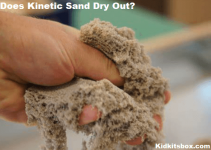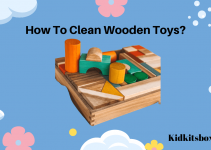Wooden toys are often advertised as one of the safest options than plastic toys when it comes to children’s environment. Most wooden toys are free of many of the toxins commonly found in plastic toys, and when made carefully, broken pieces can return to the Earth at the end of their lifespan rather than sitting in a landfill forever.
Below are 5 reasons to give you more insight into why wooden toys are better than plastic and why you might consider investing in wooden toys.
5 Reasons why wooden toys are better than plastic
1. Wooden toys are durable and versatile
Surely you’ve experienced the heartbreaking experience of a new toy breaking right off the bat. Maybe the toy you were trying to give your child was turned around and thrown at the child. Been there, done it!
Or maybe the cheap plastic toy just didn’t hold up while playing. Your child comes to you and begs you to fix it. Yes, I know that too!
When it comes to durability, wooden toys are the winners over plastic toys. When wooden toys are carefully crafted from high-quality materials, they will last even under the roughest play. Whether you want to relieve your baby of an impending chew with a chew toy or your child pretends to be a hammer, a wooden toy will hold up just fine.
A well-made wooden toy has the potential to last for generations. Although you may pay a higher cost upfront, wooden toys offer a lot of value. Wooden toys can become special heirlooms that are passed down from child to child.
2. Safer than plastic toys for children
A parent’s top priority is their child’s safety, which is one of the main reasons why wooden toys have become so popular than plastic. Young children put almost everything in their mouths, so it’s important to keep them away from items full of toxins and chemical residues.
Plastic toys often contain chemicals called BPA and PVC, which can expose children to these risks. BPA (Bisphenol A) is a chemical found by the Food and Drug Administration (FDA) to be harmful to fetuses and children.
PVC (polyvinyl chloride) can be harmful because it requires the addition of phthalates to soften it. Phthalates are potential hormone disruptors that can enter the bloodstream and cause developmental and reproductive toxicity. Phthalates have also been linked to asthma.
In addition to these potentially harmful ingredients, plastic toys are often cheaply made, making them more prone to breaking into pieces. These pieces may present a choking hazard or have sharp edges.
On the other hand, well-made wooden toys are free of chemicals like BPA, PVC, and phthalates and are generally much sturdier, making them less likely to cause choking or injury. See below for guidance on purchasing wooden toys.
3. Encourage imaginative play
Imagine your child sitting with a toy tablet. It talks to them, tells them which buttons to press, and makes sounds based on the actions taken. Now imagine your child having a set of wooden blocks like this. Imagine them stacking blocks and laughing when they fall. Imagine building houses, bridges, and animal cages out of blocks.
Which toy is both fun and more capable of teaching and encouraging creativity? I think we can collectively agree that the bloc is. Wooden toys are better than plastic toys for imaginative play. Wooden toys are simple in design, allowing your child to take the lead.
There are no voice commands to tell your child what to do. This means peace for your children and education for them. It’s a win-win for everyone!
Wooden toys promote open-ended play, giving one toy the opportunity to hold a child’s attention for longer. Open-ended play allows children to become leaders and practice decision-making skills.
Open-ended play is any type of play that allows children to create their own rules and create outcomes or solutions. Let’s use the block example again. Playing with blocks is considered open-ended play because there is no single course of action and no final solution.
4. Cost-effective
Wooden toys may be more expensive than plastic toys, but they save money because they don’t need to be replaced as often as plastic toys. Because wooden toys are sturdy enough to withstand many children, they can often be passed from one sibling to another or from one family member to another.
And since wooden toys don’t require batteries and won’t break down the electrical system, you’ll save even more money and frustration.
5. Environmentally friendly than plastic toys
Wooden toys are generally biodegradable, recyclable, and much easier to recycle, making them more environmentally friendly than most toys. This means that instead of clogging up landfills for hundreds of years, it breaks down and is absorbed into the earth when it is no longer used.
Additionally, if you follow our guidelines for purchasing wooden toys (see below), the items you purchase will not contain toxic glues and dyes that can harm the planet.


